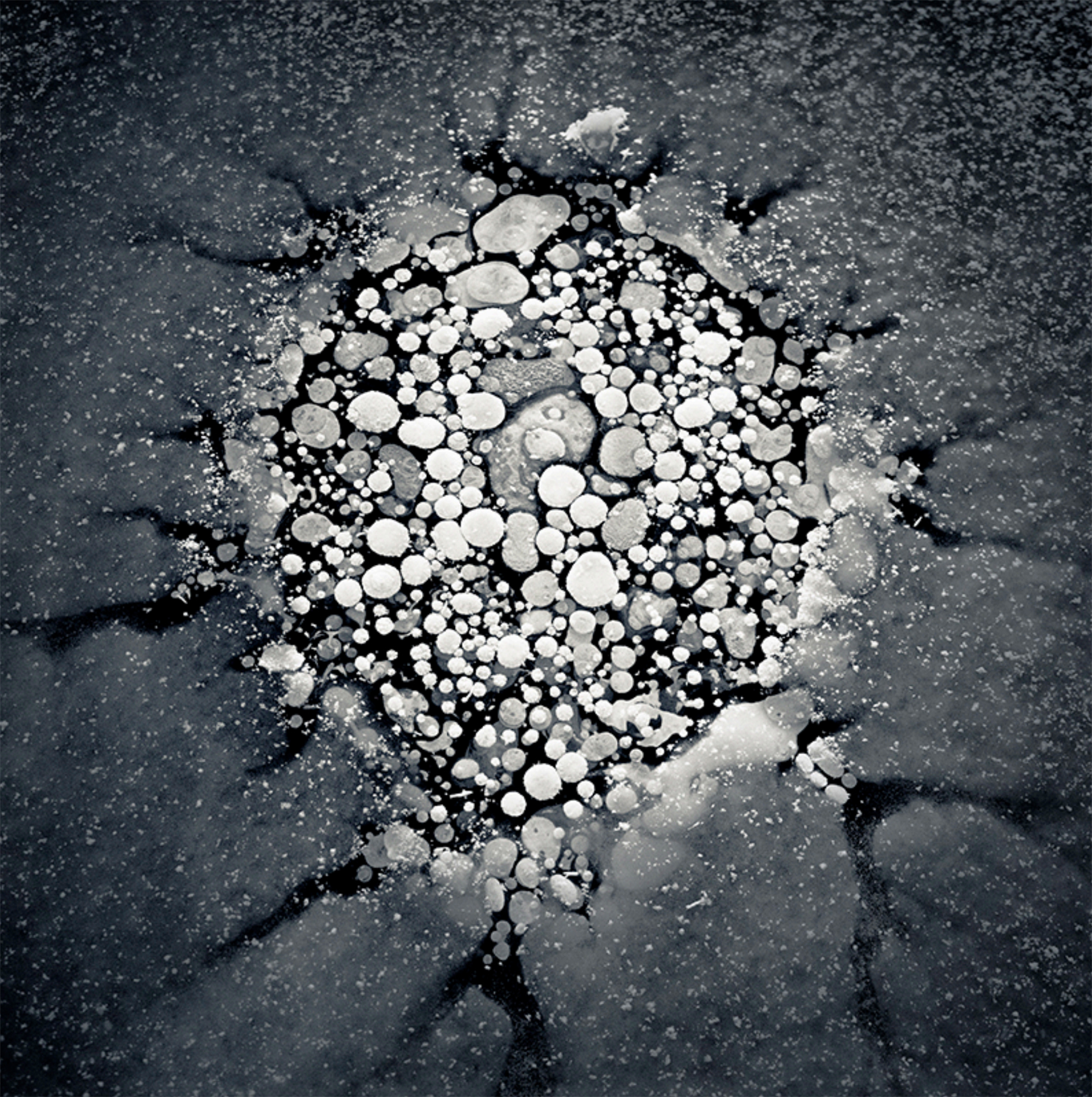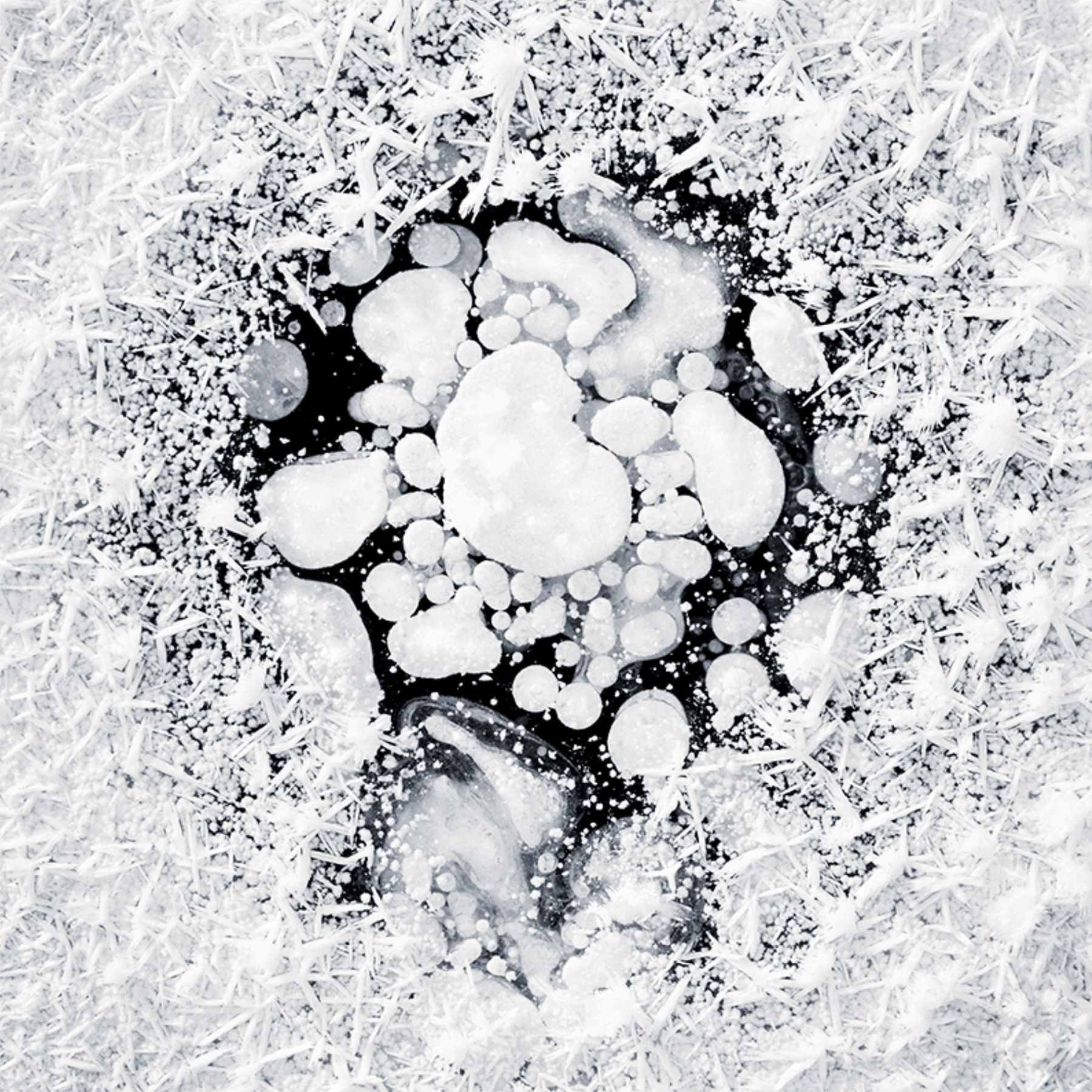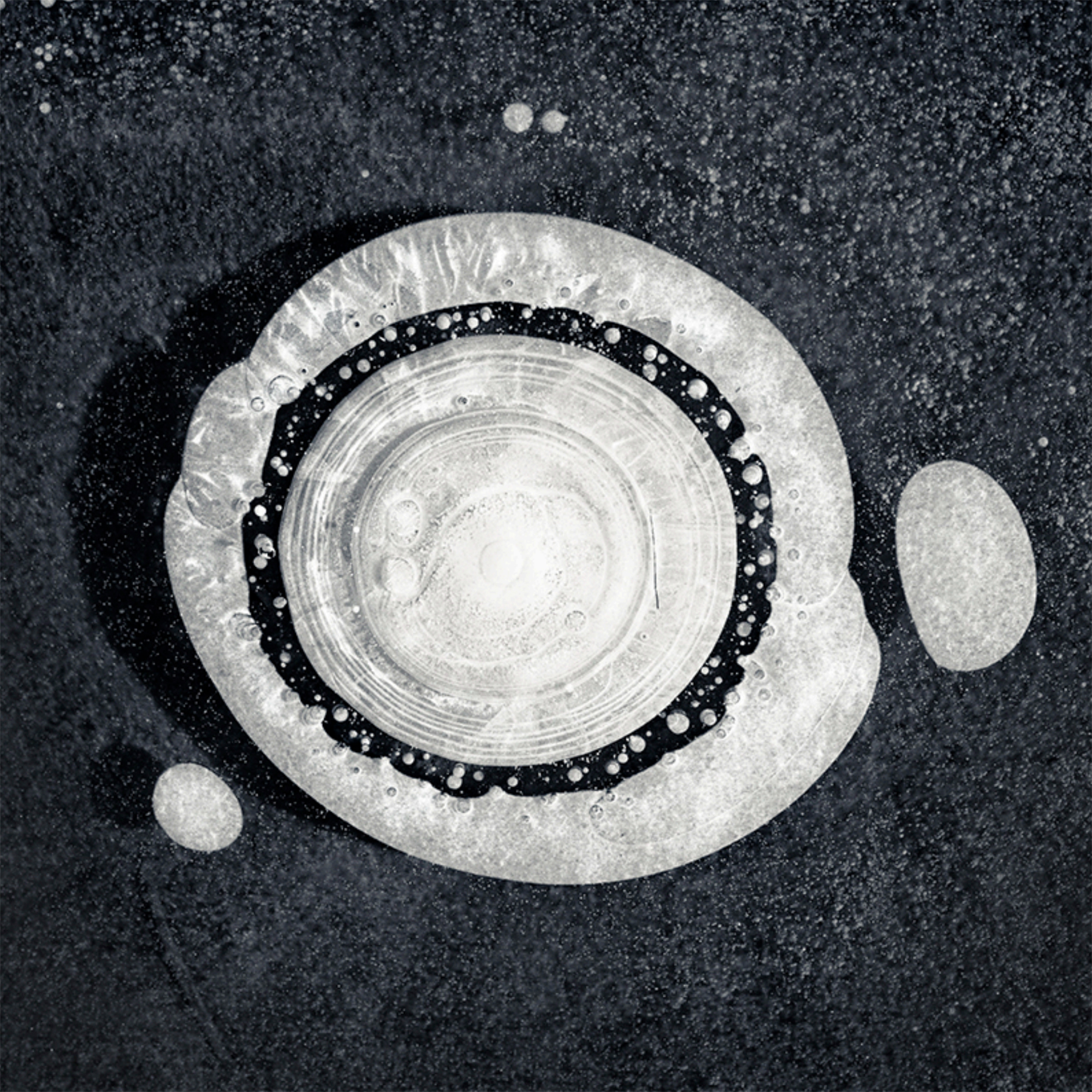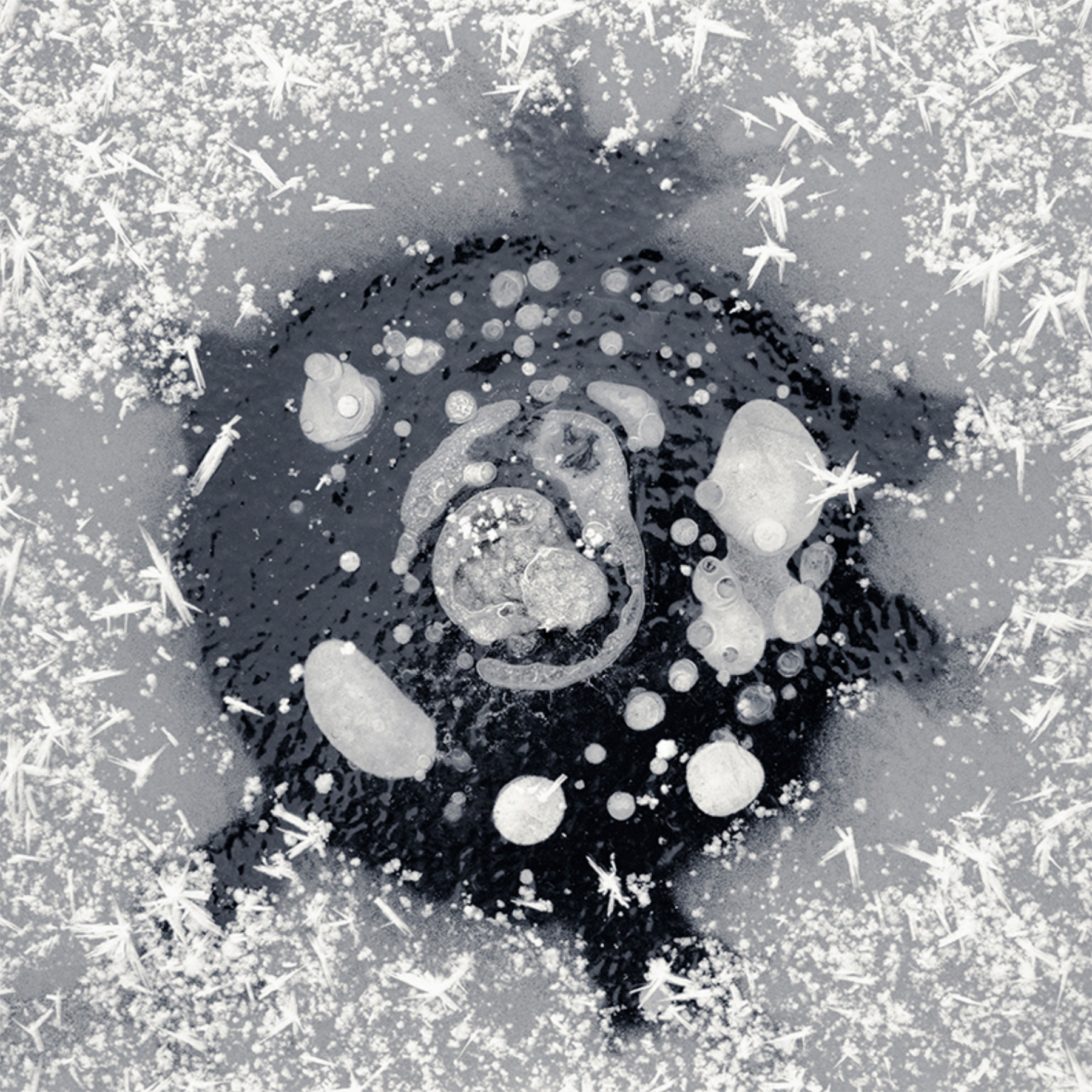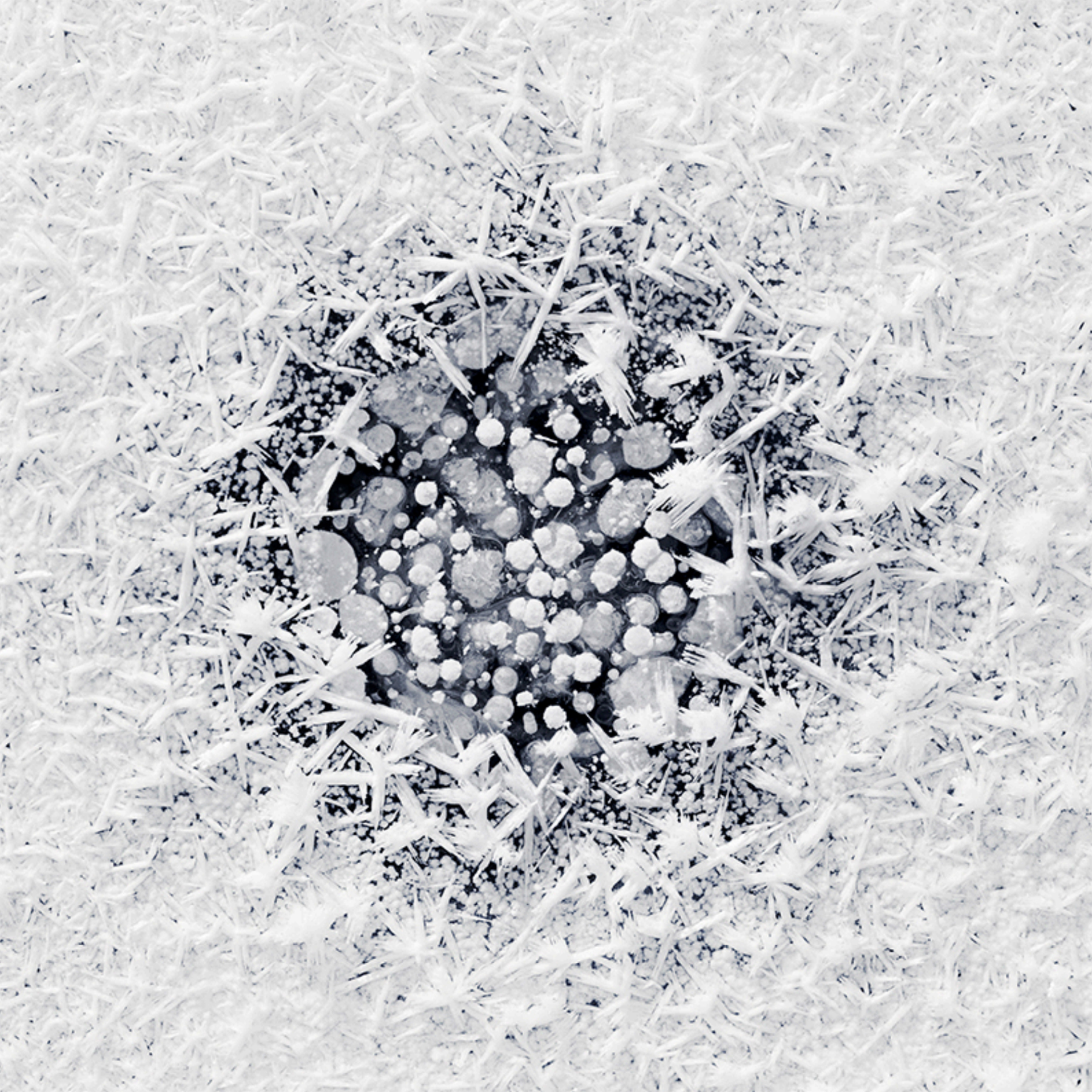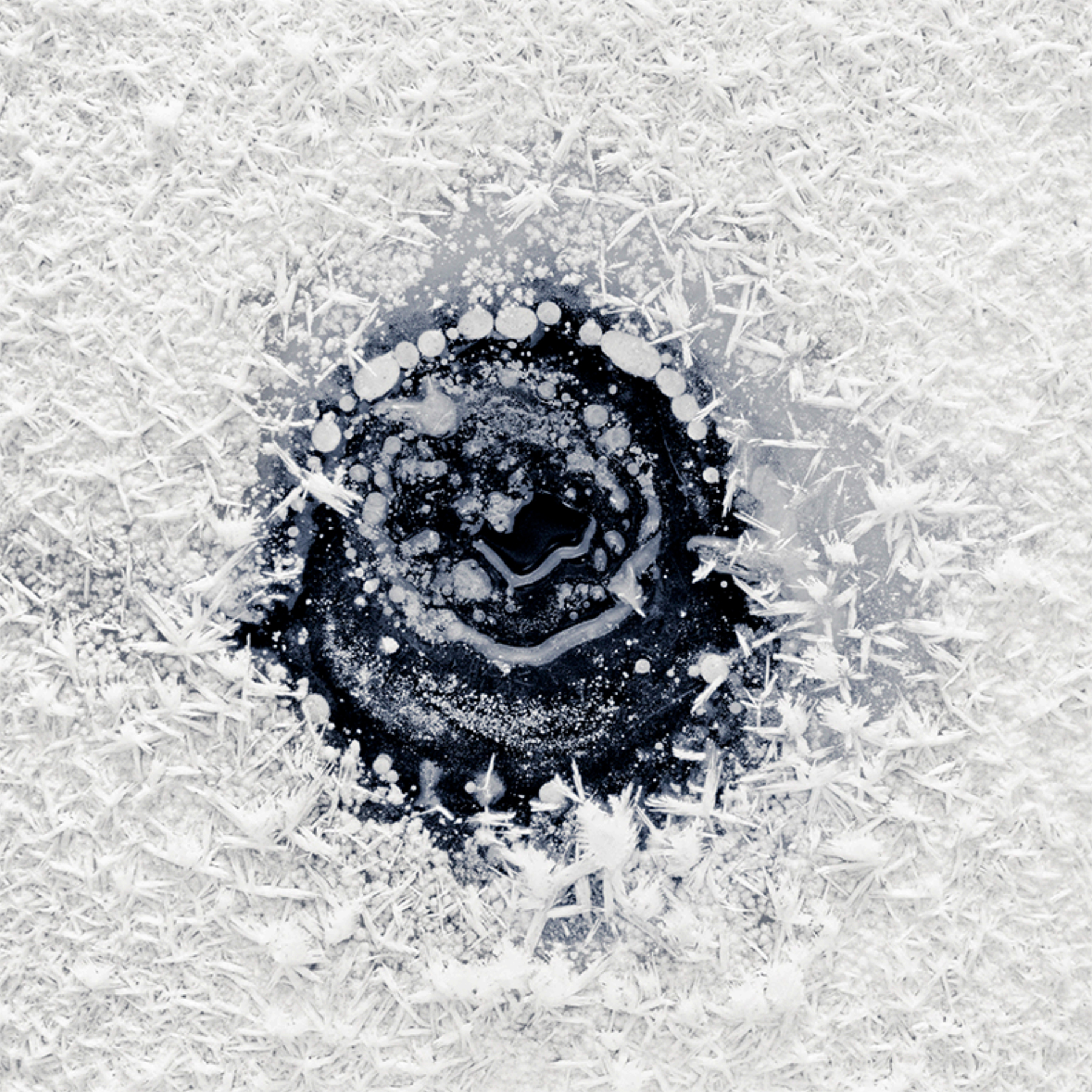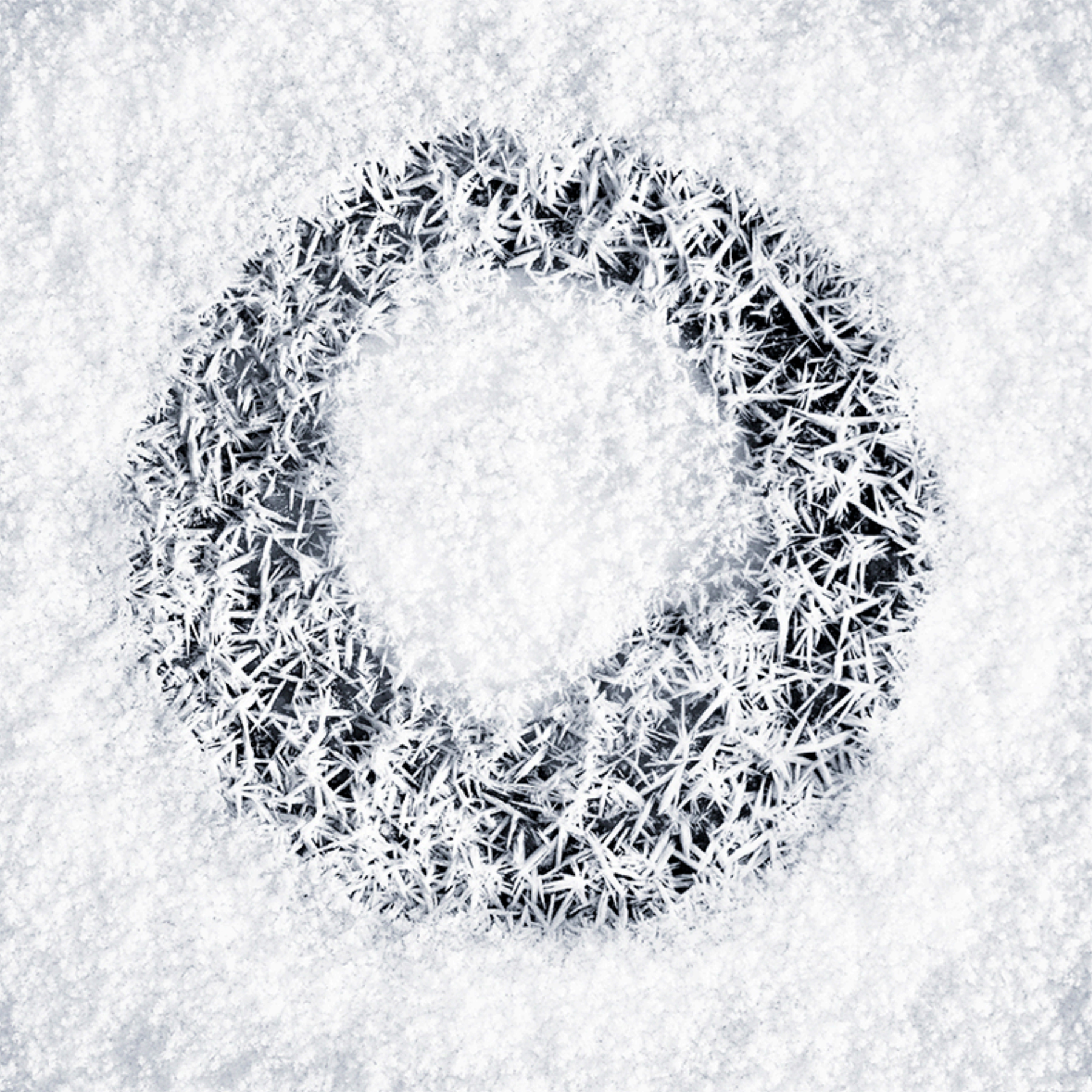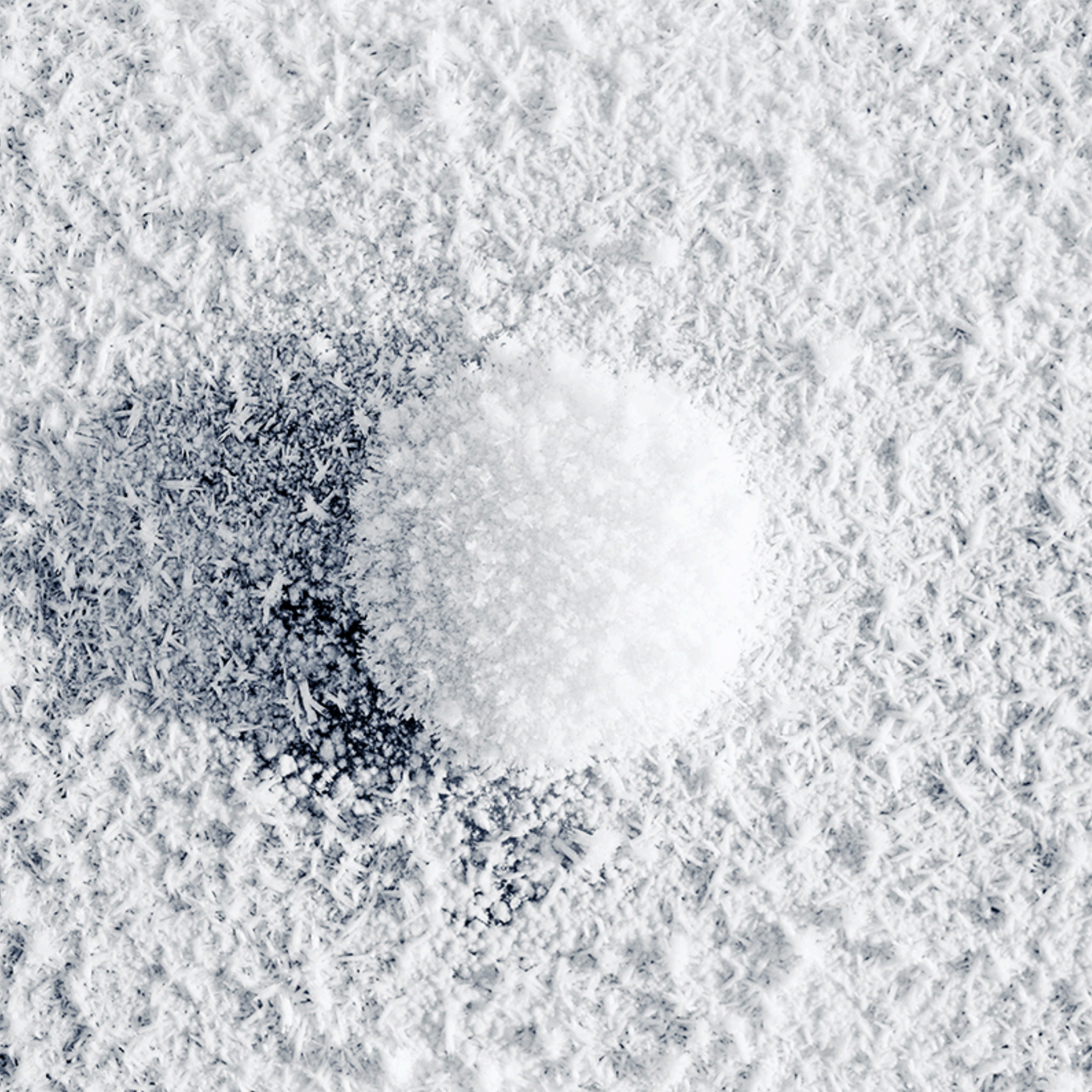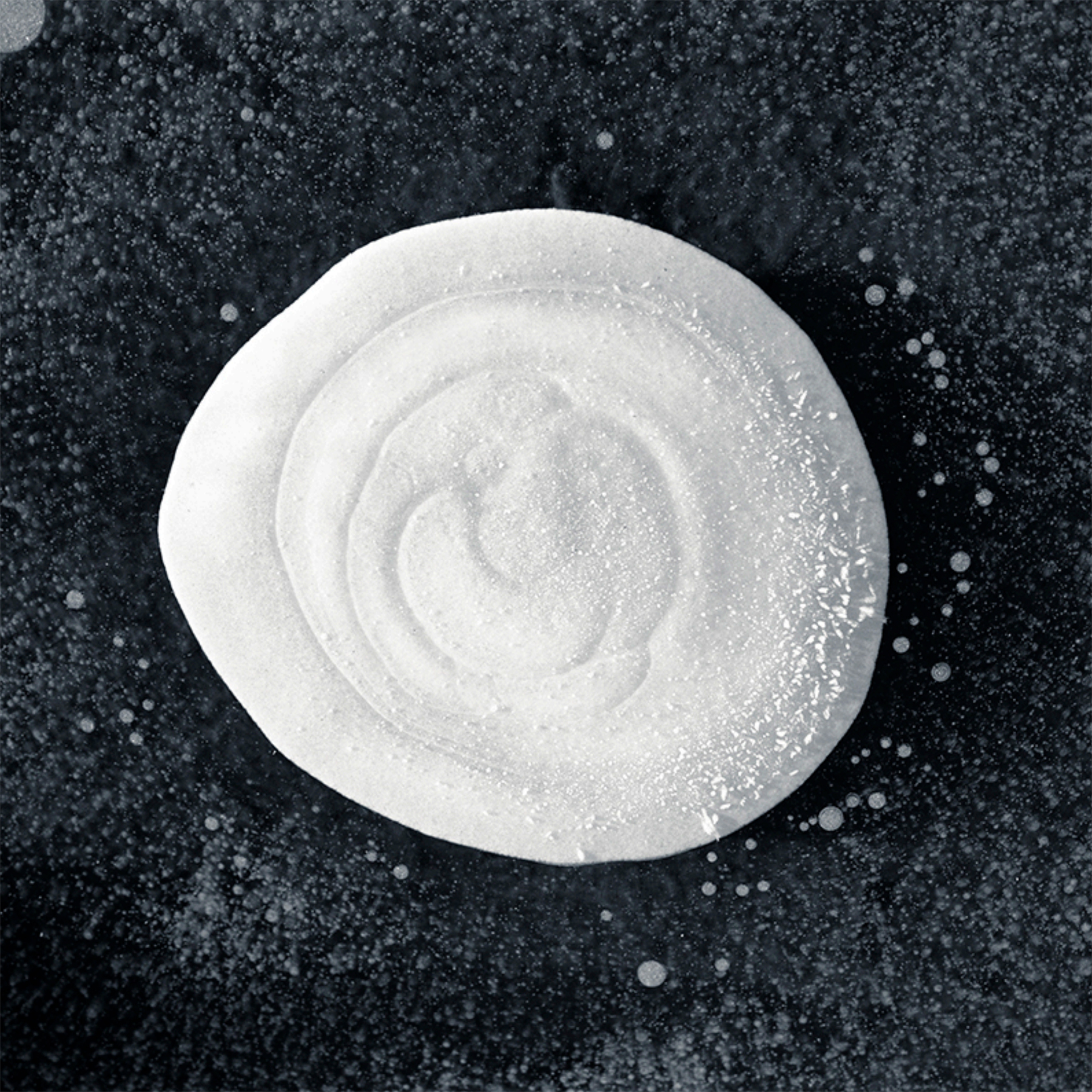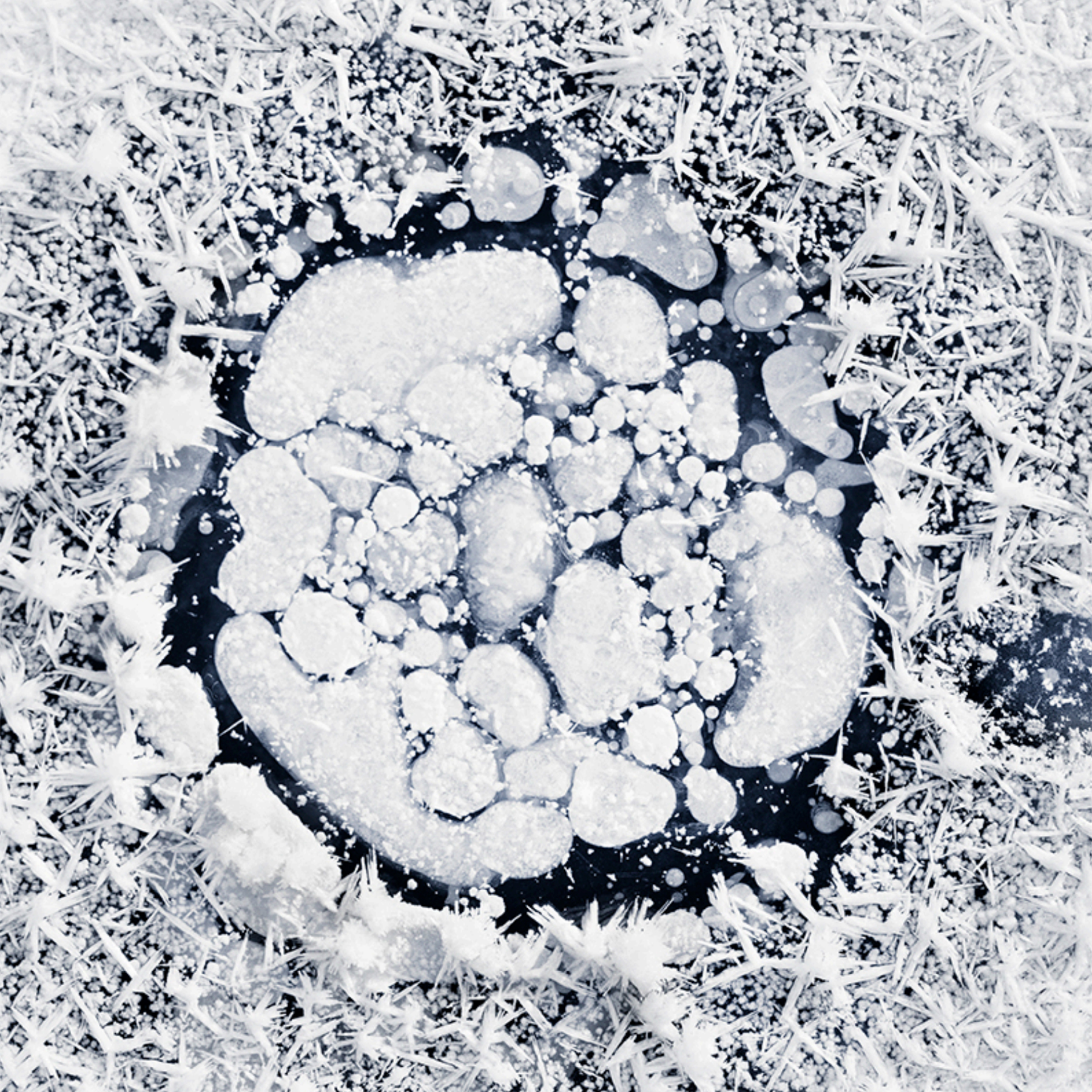Ryota Kajita
Ice Formations
2014 | MFA Thesis Exhibition
Artist Statement
This series captured ice formations on lakes and rivers in Fairbanks, Alaska. Many of these are frozen bubbles of gases like methane or carbon dioxide trapped under ice. When lake and river water freezes, it turns into ice slowly from the surface and traps the gases. The bubbles create unique geometric patterns. The actual diameter of the ice formations in my series is about 10-30 inches. Because methane gas is considered as one of the fundamental causes of greenhouse effects, scientists in Alaska are researching these frozen bubbles in relation to the global climate change. The water also shows other beautiful patterns in fall and winter. Snow falls on lakes and rivers, freezes, melts, refreezes and creates unique organic patterns on ice. The vapor in the air freezes as frost and grows intricate ice crystals. I try to capture the beauty and the dynamic changes of water in nature. The images are black and white with slight tint of colors. By minimizing colors, viewers can focus on the elegance of the forms and shading created by clear transparent ice and white frost.
When the autumn goes and the winter comes in Fairbanks, I am cheerfully heading off outside to find ice. The window to find the ice pattern is short, because the ice is quickly covered once the snow falls. Wandering around looking for ice with my camera reminds me of treasure hunting in my boyhood. I used to run out into the woods after school hours. Exploring places that made up my neighborhood was an adventure and I enjoyed leaving my footprints on unknown areas. It was fun and uplifting enough to satisfy my young, innocent curiosity. As an adult, photographing ice has its roots in those childhood adventures. It's in that spirit I strive to know the environment deeper-and genuine curiosity propels me to be involved in the place I live. It's a dialog between nature and me. The photograph is the treasure I take from hunting my surroundings, and through photographs, nature reveals its secret beauty to me.
What's New
|
His photographs have been exhibited in the Japan Professional Photographers Society Exhibition (2011), Alaska’s Rarefied Light (2012, 2013 & 2015), The Aesthetica Art Prize (2012 & 2013), Aperture Summer Open (2014), Geo-Cosmos Content Contest (2014) of The National Museum of Emerging Science and Innovation, FotoFilmic17 Winter Shortlist Show (2017) , FotoFilmic SOLO IV Winner Exhibition (2018), FENCE (2018) and other shows. His photography series of “Ice Formation” is featured in the magazine “Photo Technique” (November/December 2012), “LENSCRATCH.com”(May 2015), “WIRED.com“ (August 2015), “城市画報 -CITY ZINE-“ (January/February 2016), National Geographic Magazine (March 2020) and is represented by Susan Spiritus Gallery in Newport Beach, California and Fotofilmic in Vancouver, Canada. His work became part of the Seattle Office of Arts & Cultural Affaires and The Alaska Contemporary Art Bank in 2013. He was selected for Blue Sky 2013 & 2018 Pacific Northwest Photography Viewing Drawers Program (“Drawers”) of the Oregon Center for the Photographic Arts, and won the Grand Prize in ONWARD Compe ’13 International Photography Competition, the Student Abstract Category Award in 2013 American Aperture Awards (AX3), Juror’s Selection / Director’s Honorable Mention / Livebooks Website Award in Natural World 2014 Nation Wide Juried Photography Competition of The Center for Fine Art Photography. He was chosen for a finalist of Lens Culture’s Earth Awards 2015, CENTER Project Launch Grant Juror’s Choice recipient 2017 and TIPC 7th Edition Winner 2020. His video documentary “Losing Ground” about Shishmaref Island’s severe erosion due to climate change, achieved the Cinema Committee Choice Award in Fairbanks Film Festival (2007), and was broadcast on the Alaska Shorts Program of Alaska One television (2012). |
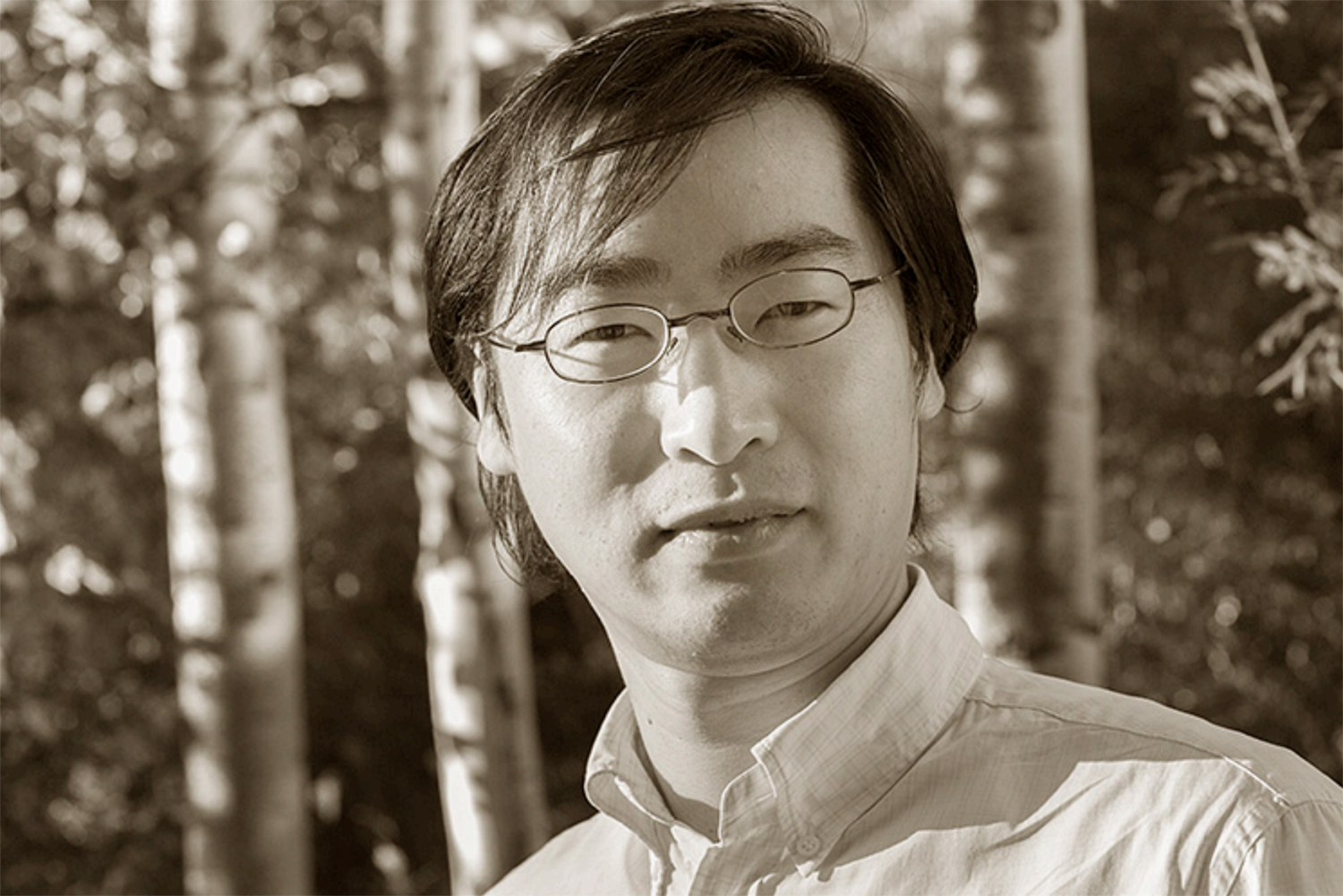
About the Artist
Ryota Kaji Kajita is originally from Japan, completed his MFA degree in photography at the University of Alaska Fairbanks, worked at the University of Alaska Museum of the North as a collection photographer, and taught at the Joshibi University of Art and Design in Japan.
He has traveled to more than 50 remote Alaska villages by a two-seat, light aircraft and snowmobile for scientific research. He loves travelling, backpacking and cross-country skiing with a medium format film camera and always responds to the beauty of nature.


